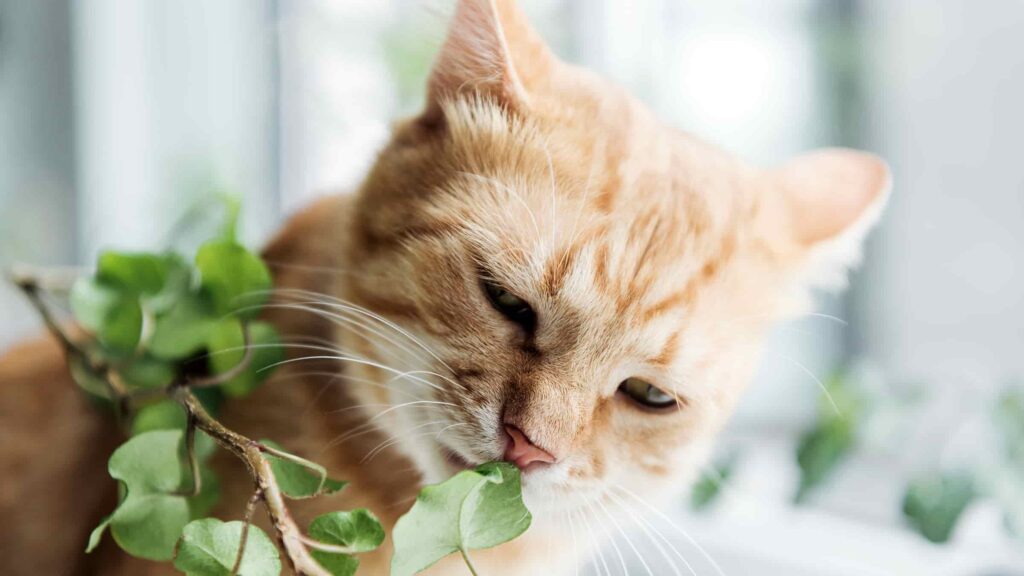Safe scents for cats include chamomile hydrosol and catnip. Avoid toxic scents like citrus or tea tree oil. Consult a vet for cat-safe fragrance options in 2025.
Pet owners often ask, what scents are safe for cats, as they seek to create a pleasant home environment without harming their feline companions. Cats have sensitive olfactory systems, making cat scent safety a critical concern. In 2025, with growing interest in cat-safe aromatherapy and pet-friendly home scents, understanding feline scent risks is essential.
This SEO-optimized guide explores safe smells for cats, toxic scents for cats, and cat-safe scent alternatives, using insights from pet health advice scents 2025 to ensure pet scent safety. Whether you’re using diffusers or air fresheners, learn how to choose scents non-toxic to cats for a cat-friendly home.
Understanding Cat-Safe Scents and Risks
Cats’ livers lack enzymes to metabolize certain compounds in scents, making feline scent risks a reality. Cat exposure to scents like essential oils or synthetic fragrances can lead to essential oil toxicity cats or cat scent-related health issues.
According to the ASPCA Animal Poison Control Center (2025 data), over 10,000 pet poisoning cases annually involve scents, with cats particularly vulnerable. Here’s why are scents safe for cats is a complex question:
- Essential Oils: Many oils, like tea tree or eucalyptus, are toxic scents for cats, causing feline respiratory issues scents or cat skin irritation from scents.
- Synthetic Fragrances: Common in air fresheners, these can trigger cat allergic reaction to scents or cat behavioral changes scent exposure.
- Natural Scents: Even natural scents for cat households like citrus or pine may pose cat health scent risks if inhaled or ingested.
Veterinary warning toxic scents advises avoiding strong odors unless confirmed as scents non-toxic to cats. For cat-safe fragrances, always consult veterinary advice cat scents before use.
Signs of Scent Toxicity in Cats

Recognizing signs of scent poisoning in cats is vital for timely intervention. Cat scent sensitivity symptoms may appear within hours of exposure to toxic scents for cats. Watch for:
- Respiratory Distress: Feline respiratory issues scents like coughing, wheezing, or rapid breathing.
- Skin Reactions: Cat skin irritation from scents, including redness or excessive grooming.
- Gastrointestinal Issues: Vomiting or drooling, indicating feline scent toxicity symptoms.
- Neurological Symptoms: Tremors, lethargy, or cat behavioral changes scent exposure.
- Allergic Reactions: Sneezing or watery eyes from cat allergic reaction to scents.
If you suspect cat scent-related health issues, contact an emergency vet near me or local pet poison control. Search cat vet [city/state] (e.g., cat vet New York, NY) for feline emergency care scents.
The Pet Poison Helpline notes a 15% rise in scent-related cat cases in 2025, underscoring the need for pet poisoning prevention scents.
Safe Scents for Cats: What’s Okay to Use?
Pet owners asking what smells are okay for cats can use these cat-safe scents, vetted by experts like the American Veterinary Medical Association:
- Chamomile Hydrosol: A gentle feline-safe smell, safe for cat-safe diffuser scents, costing $10-$20. It promotes calm without aromatherapy dangers for cats.
- Rose Water: A non-toxic scent for pets, ideal for pet-safe air fresheners, available for $5-$15.
- Catnip: A natural cat-friendly aroma that stimulates most cats harmlessly, found in toys for $3-$10.
- Lavender (Vet-Approved, Diluted): Rarely, diluted lavender is among safe essential oils for cats, but only under feline veterinary care scents guidance.
Safe scents for cat households should be low-concentration and used in well-ventilated areas. Avoid cat-safe diffuser scents unless confirmed by a vet, as even pet-safe essential oil scents can accumulate in enclosed spaces.
Toxic Scents to Avoid Around Cats
To ensure cat scent safety, steer clear of these toxic scents for cats, per 2025 veterinary warnings:
- Citrus Oils: Lemon or orange oils cause feline scent toxicity symptoms like vomiting.
- Pine or Cedar: Often in cleaners, these trigger feline respiratory issues scents or cat skin irritation from scents.
- Tea Tree Oil: Highly toxic, leading to essential oil toxicity cats and neurological issues.
- Synthetic Fragrances: Found in plug-in air fresheners, risking cat allergic reaction to scents.
Risks of scents around cats are amplified in diffusers or sprays. Cat scent safety X posts on X highlight pet owners’ experiences with accidental exposures, reinforcing the need to avoid toxic scents for cats.
Veterinary Advice for Scent Exposure in Cats
If your cat shows cat scent sensitivity symptoms, feline veterinary care scents is critical. A vet diagnosis cat scent poisoning may involve:
- Decontamination: Washing skin or inducing vomiting (vet-supervised) to remove cat exposure to scents.
- Supportive Care: IV fluids or oxygen for cat toxicity treatment scents to manage feline scent toxicity symptoms.
- Monitoring: Checking for feline respiratory issues scents or neurological effects.
Cat scent exposure treatment costs in 2025 range from $200-$1,500, depending on severity and veterinary care [city/state] (e.g., veterinary care Los Angeles, CA).
Check toxic scents cats social media for affordable cat health services near me. Veterinary advice cat scents emphasizes pet safety home fragrances to prevent issues.
How to Use Scents Safely with Cats
For pet owners wondering how to use scents safely with cats, follow these cat-safe home fragrance options:
- Ventilation: Use scents in open spaces to reduce cat health scent risks from inhalation.
- Low Concentrations: Dilute cat-friendly essential oils heavily, if vet-approved, to minimize aromatherapy dangers for cats.
- Avoid Diffusers: Cat-safe diffuser scents are rare; opt for pet-safe air fresheners like baking soda-based products.
- Secure Storage: Keep scents out of reach to prevent cat behavioral changes scent exposure.
- Monitor Reactions: Watch for cat scent sensitivity symptoms when introducing natural scents for cat households.
How to choose safe scents for cats involves consulting local feline veterinary services or checking pet health advice scents 2025 on X for community insights.
Safe Scent Alternatives for Cat Owners

If you’re seeking cat-safe scent alternatives, 2025 offers feline-friendly scent options for a cat-friendly home:
- Baking Soda: A cat-friendly odor control solution, neutralizing smells for $1-$5.
- Herbal Sachets: Catnip or chamomile sachets are non-toxic home fragrances cats, costing $5-$15.
- Vinegar Solutions: Diluted vinegar is a pet-safe home scent solution, effective for cleaning and odor control.
- Hydrosols: Chamomile or rose hydrosols are safe scent substitutes for cats, ideal for feline-safe smells.
Natural cat-safe smells should be vet-approved to avoid small animal scent safety risks. Cat-safe scents 2025 trends on X highlight hydrosols’ popularity for pet-safe home fragrances.
2025 Trends in Pet Scent Safety
Cat-safe scents 2025 reflect growing awareness of pet scent safety trends. Cat scent safety X posts show pet owners favoring non-toxic home fragrances cats like hydrosols, driven by feline scent safety 2025 concerns.
Telemedicine for feline veterinary care scents is rising, with consults costing $30-$100, making pet health advice scents 2025 accessible. Toxic scents cats social media discussions highlight risks of diffusers, pushing demand for cat-friendly odor control solutions.
FAQs:
1. What scents are safe for cats to smell?
Cat-safe scents like chamomile hydrosol, rose water, or catnip are safe for cats to smell. Avoid toxic scents for cats like citrus or tea tree to prevent feline scent toxicity symptoms in 2025.
2. How can I make my house smell good without harming my cat?
Use pet-safe air fresheners like baking soda or cat-safe scent alternatives like chamomile sachets. Ventilate spaces and consult veterinary advice cat scents to ensure cat-friendly aromas and avoid cat health scent risks.
3. What air freshener is safe for cats to smell?
Pet-safe air fresheners like vinegar solutions or herbal sachets (catnip, chamomile) are safe for cats. Avoid synthetic sprays to prevent cat allergic reaction to scents and ensure feline-safe smells in 2025.
4. What fragrance oils are pet safe?
Few fragrance oils are pet-safe essential oil scents; vet-approved diluted lavender or chamomile hydrosols are safest. Confirm with feline veterinary care scents to avoid essential oil toxicity cats in cat-friendly homes.
5. Are fragrance oils safe to diffuse around cats?
Most fragrance oils are unsafe to diffuse, risking feline respiratory issues scents or cat scent sensitivity symptoms. Use cat-safe diffuser scents like rose water under veterinary advice cat scents in 2025.
Conclusion
In 2025, cat-safe scents like chamomile hydrosol or catnip ensure pet safety, while toxic scents like citrus or tea tree oil pose risks. Use ventilated, vet-approved fragrances and monitor for toxicity symptoms. Engage with X posts for real-time pet safety tips. Consulting veterinarians and choosing non-toxic alternatives creates a cat-friendly home, prioritizing feline wellness and preventing scent-related health issues for a safe, comfortable environment.
Related Post:
- Pet Fix Savannah – Low-Cost Spay/Neuter!
- How Long Do Pet Allergy Symptoms Last – Comprehensive Guide!
- Can I Pet That Dog Shirt – Stylish Dog Love!
- Alternative To Pet Door – Pet Safety Solutions!
- What To Do With Pet Ashes – Honoring Your Pet’s Memory!
